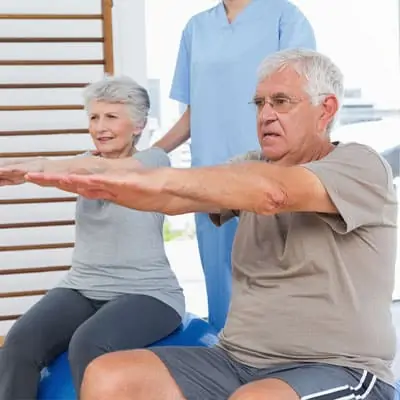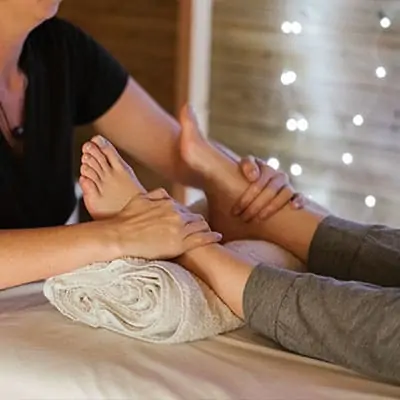Understanding Scoliosis in Adults
Scoliosis is a condition that affects the spine, resulting in a sideways curvature. While it is commonly diagnosed during adolescence, it can also develop or persist into adulthood. Understanding the definition and causes of scoliosis in adults, as well as its effects, is crucial for managing the condition effectively.
Definition and Causes of Scoliosis in Adults
Scoliosis in adults is characterized by an abnormal lateral curvature of the spine. This curvature can vary in severity, ranging from mild to severe. Several factors can contribute to the development of scoliosis in adults:
- Idiopathic Scoliosis: Often diagnosed during adolescence, this type can progress into adulthood.
- Degenerative Scoliosis: Caused by the degeneration of the spine due to aging, leading to curvature.
- Secondary Scoliosis: Resulting from conditions such as osteoporosis, spinal surgeries, or injuries.
- Neuromuscular Scoliosis: Associated with conditions like muscular dystrophy or cerebral palsy.
For more detailed information on the causes, you can visit our article on scoliosis causes.
Effects of Scoliosis on Adults
The effects of scoliosis on adults can vary depending on the severity of the curvature and the underlying cause. Common symptoms and effects include:
- Pain and Discomfort: Chronic back pain is a frequent complaint among adults with scoliosis. This pain can be due to the curvature itself or related muscle strain.
- Mobility Issues: The curvature can affect your range of motion, making it difficult to perform certain activities.
- Postural Changes: Scoliosis can lead to noticeable changes in posture, such as uneven shoulders or hips.
- Respiratory Problems: In severe cases, scoliosis can impact lung function due to the distortion of the rib cage.
| Symptom/Effect | Description |
|---|---|
| Pain and Discomfort | Chronic back pain and muscle strain |
| Mobility Issues | Reduced range of motion |
| Postural Changes | Uneven shoulders or hips |
| Respiratory Problems | Impact on lung function in severe cases |
Managing these effects is essential for improving your quality of life. Regular check-ups, appropriate exercises, and lifestyle adjustments can help mitigate the impact of scoliosis. Explore our article on scoliosis management for more strategies.
Understanding scoliosis in adults involves recognizing its definition, causes, and effects. This knowledge is the first step toward effective management and improving your overall well-being.
Diagnosis and Treatment Options
When it comes to managing scoliosis as an adult, understanding the diagnosis and treatment options is crucial. This section will cover how scoliosis is diagnosed in adults, non-surgical treatments, and surgical options for severe cases.
Diagnosing Scoliosis in Adults
Diagnosing scoliosis in adults usually begins with a physical examination. Your healthcare provider will look for signs such as uneven shoulders or hips. Imaging tests such as X-rays, MRI, and CT scans are often used to confirm the diagnosis and measure the curvature of the spine.
| Diagnostic Test | Purpose |
|---|---|
| X-ray | Determines the degree of spine curvature |
| MRI | Identifies any spinal cord or nerve issues |
| CT Scan | Provides detailed images of the spine |
For more details on the diagnostic process, visit our article on scoliosis diagnosis.
Non-Surgical Treatment Options for Adult Scoliosis
Non-surgical treatments are often the first line of defense in managing scoliosis in adults. These treatments aim to alleviate symptoms and improve quality of life.
- Physical Therapy: Exercises tailored to strengthen the core muscles can help stabilize the spine. Learn more about scoliosis physical therapy.
- Bracing: Although less common in adults, wearing a scoliosis brace can sometimes help manage the condition.
- Pain Management: Medications, massage therapy, and other techniques can be used to manage scoliosis pain.
Explore our article on scoliosis exercises for adults for specific exercises that can help.
Surgical Options for Severe Cases
In severe cases, surgery may be necessary to correct the spine’s curvature and alleviate symptoms. Surgical options include:
- Spinal Fusion: This procedure involves fusing two or more vertebrae to prevent further curvature.
- Decompression Surgery: This surgery removes parts of the bone or tissue that are pressing on the spinal nerves.
- Vertebral Column Resection: In extreme cases, sections of the vertebrae may be removed to correct the curvature.
| Surgical Option | Purpose |
|---|---|
| Spinal Fusion | Prevents further curvature |
| Decompression Surgery | Relieves nerve pressure |
| Vertebral Column Resection | Corrects severe curvature |
For a deeper understanding of surgical treatments, read more about scoliosis treatment.
Managing scoliosis requires a comprehensive approach that includes regular monitoring, appropriate treatments, and lifestyle adjustments. By understanding the available options, you can make informed decisions about your health and well-being. For ongoing management tips, visit our section on scoliosis management.
Managing Scoliosis as an Adult
Importance of Regular Exercise
Regular exercise plays a crucial role in managing scoliosis as an adult. Engaging in physical activities helps to strengthen the muscles supporting your spine, improve flexibility, and reduce pain. Specific exercises designed for scoliosis can target areas of weakness and imbalance, promoting better posture and spinal alignment.
| Exercise Type | Benefits |
|---|---|
| Strength Training | Builds muscle support for the spine |
| Stretching | Increases flexibility and reduces stiffness |
| Low-Impact Aerobics | Improves cardiovascular health without straining the back |
| Yoga and Pilates | Enhances core strength and promotes relaxation |
For more information on exercises suitable for scoliosis, refer to our article on scoliosis exercises for adults.
Posture and Lifestyle Adjustments
Maintaining proper posture and making lifestyle adjustments are essential for managing scoliosis. Paying attention to how you sit, stand, and move throughout the day can help prevent additional strain on your spine. Ergonomic furniture, supportive footwear, and conscious posture corrections can make a significant difference.
- Sitting: Use a chair with good lumbar support. Keep your feet flat on the floor and your back straight.
- Standing: Distribute your weight evenly on both feet. Avoid locking your knees.
- Sleeping: Choose a firm mattress and use pillows that support the natural curve of your spine.
Incorporating these adjustments into your daily routine can alleviate discomfort and improve your overall quality of life. For detailed guidance, check out our article on scoliosis management.
Pain Management Strategies
Pain management is a critical aspect of living with scoliosis. Various strategies can help you cope with discomfort and enhance your well-being.
- Medications: Over-the-counter pain relievers, such as ibuprofen or acetaminophen, can provide temporary relief.
- Physical Therapy: Tailored exercises and manual therapy can address pain and improve function. Learn more about physical therapy options in our article on scoliosis physical therapy.
- Heat and Cold Therapy: Using heating pads or ice packs can reduce inflammation and ease muscle tension.
- Alternative Therapies: Techniques like massage therapy, acupuncture, and chiropractic care can offer additional relief. Explore more in our article on scoliosis alternative treatments.
Implementing these pain management strategies can help you maintain an active and fulfilling lifestyle despite scoliosis. For more tips on managing scoliosis pain, visit our article on scoliosis pain.
Emotional and Mental Wellbeing
Coping with Body Image Concerns
Living with scoliosis can impact your body image and self-esteem. As an adult, the physical changes caused by scoliosis might lead to feelings of self-consciousness or anxiety about your appearance. Understanding and addressing these concerns is crucial for maintaining a positive mental and emotional state.
First, it’s important to recognize that scoliosis affects each person differently. Comparing yourself to others can exacerbate feelings of inadequacy. Instead, focus on your unique strengths and embrace your individuality.
Engaging in activities that promote self-acceptance and body positivity can be beneficial. This might include:
- Mindfulness Practices: Techniques like meditation and yoga can help you become more aware of your body and foster a sense of gratitude and acceptance.
- Therapeutic Support: Speaking to a mental health professional can provide you with strategies to manage negative thoughts and improve your self-esteem.
- Support Groups: Joining a support group for individuals with scoliosis can help you realize that you are not alone in your struggles. Sharing experiences and coping strategies with others can be empowering.
For more information on managing physical symptoms, visit our article on scoliosis pain.
Seeking Support from Others
Navigating life with scoliosis can be challenging, but you don’t have to do it alone. Seeking support from friends, family, and healthcare professionals can make a significant difference in your emotional and mental well-being.
-
Family and Friends: Your loved ones can offer emotional support and understanding. Communicate openly with them about your feelings and challenges. Their encouragement can boost your morale and provide a sense of comfort.
-
Healthcare Professionals: Regular consultations with your healthcare provider can help you manage the physical aspects of scoliosis, which in turn can positively affect your mental health. They can also refer you to mental health professionals if needed.
-
Online Communities and Forums: Participating in online forums and communities dedicated to scoliosis can connect you with people who share similar experiences. These platforms can be a source of inspiration, advice, and friendship.
-
Local Support Groups: Look for local support groups where you can meet others facing similar challenges. These meetings can provide a safe space to discuss your feelings and gain insights into managing your condition.
To learn more about lifestyle adjustments that can improve your quality of life, check out our article on scoliosis management.
Taking proactive steps to address body image concerns and seeking support can greatly enhance your emotional and mental well-being, empowering you to live a fulfilling life with scoliosis.
Preventing Progression and Complications
Monitoring Your Condition
Regular monitoring is essential in managing scoliosis in adults. Tracking your condition helps to identify any changes or deterioration early. Your healthcare provider may recommend periodic check-ups, which can include physical exams and imaging tests like X-rays or MRIs. Keeping a record of your symptoms, pain levels, and physical limitations can also be useful.
| Monitoring Activity | Frequency |
|---|---|
| Physical Exam | Every 6-12 months |
| X-ray | Annually or biannually |
| MRI | As needed based on symptoms |
Consistent monitoring can help you and your healthcare provider make informed decisions about your treatment plan. For more on monitoring and diagnosing scoliosis, refer to our section on scoliosis diagnosis.
Understanding when to Seek Medical Help
Knowing when to seek medical advice is crucial in preventing complications. If you experience an increase in pain, noticeable changes in your posture, or new symptoms such as numbness or weakness, it may be time to consult a healthcare professional. Early intervention can help manage symptoms more effectively and prevent further progression.
Common Symptoms Indicating Medical Help:
- Increased or persistent back pain
- Changes in posture or balance
- Numbness or tingling in the extremities
- Difficulty breathing or reduced lung function
For more information on recognizing symptoms, visit our article on scoliosis symptoms.
Long-Term Outlook and Prognosis
The long-term outlook for adults with scoliosis can vary widely based on the severity of the curvature, the effectiveness of treatment, and individual health factors. With appropriate management, many people can lead active, fulfilling lives. Regular exercise, physical therapy, and lifestyle adjustments play a significant role in maintaining your quality of life.
| Factor | Impact on Prognosis |
|---|---|
| Severity of Curvature | Higher degrees may require more intensive treatment |
| Treatment Compliance | Regular exercise and therapy improve outcomes |
| Overall Health | Good nutrition and general health can mitigate complications |
Understanding the long-term outlook can help you set realistic expectations and goals. For personalized strategies, explore our section on scoliosis management and related treatments.
By staying proactive and informed, you can effectively manage scoliosis and reduce the risk of complications. Regular monitoring, knowing when to seek help, and understanding your prognosis are key components in navigating life with scoliosis.











